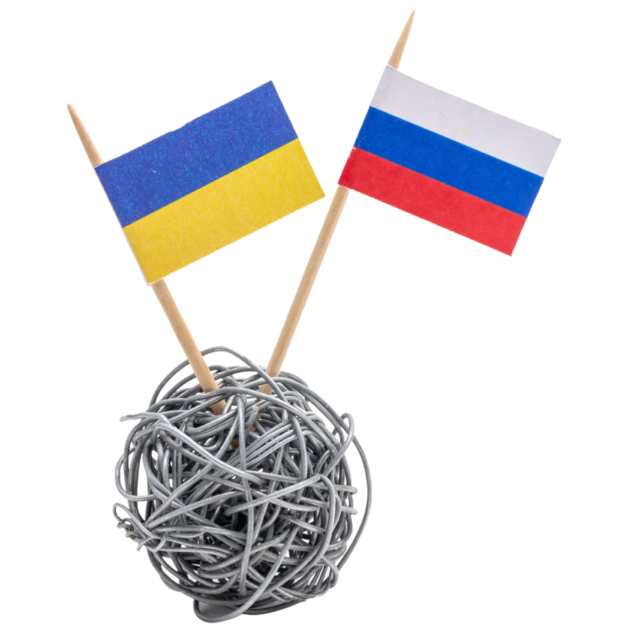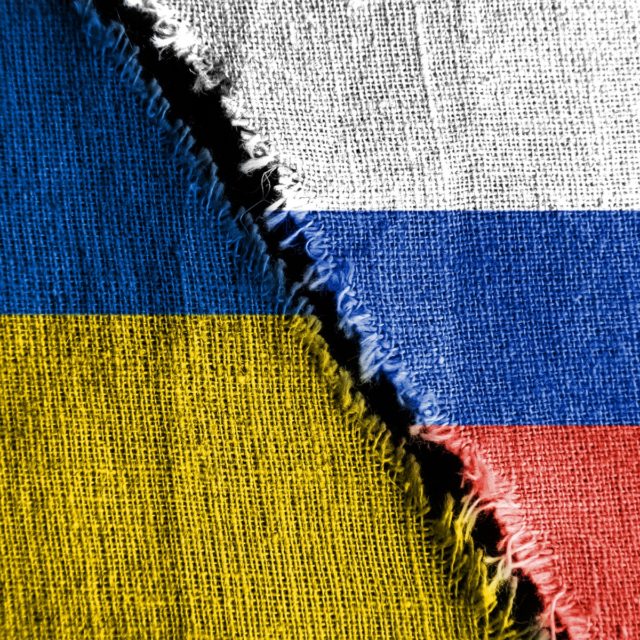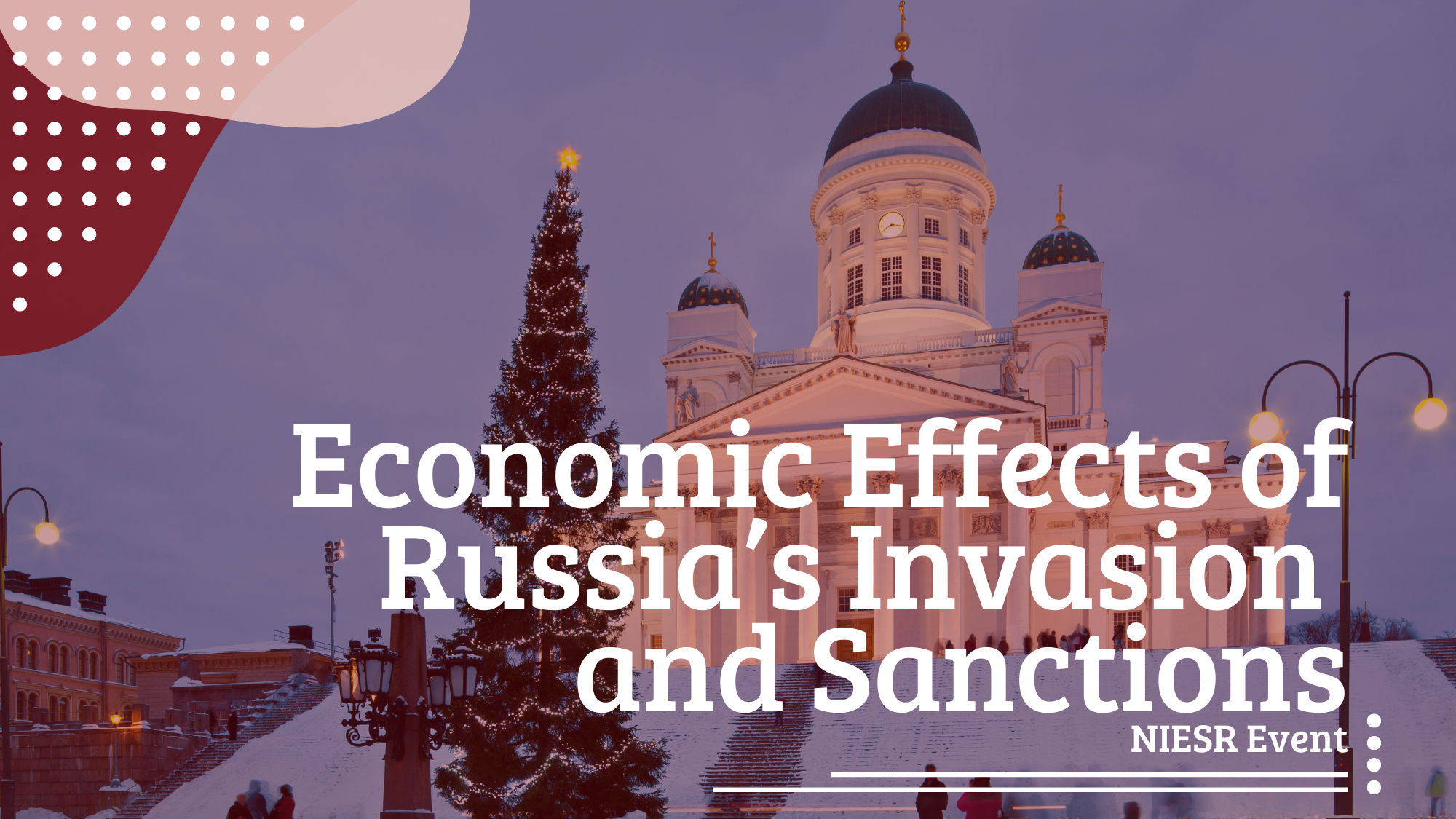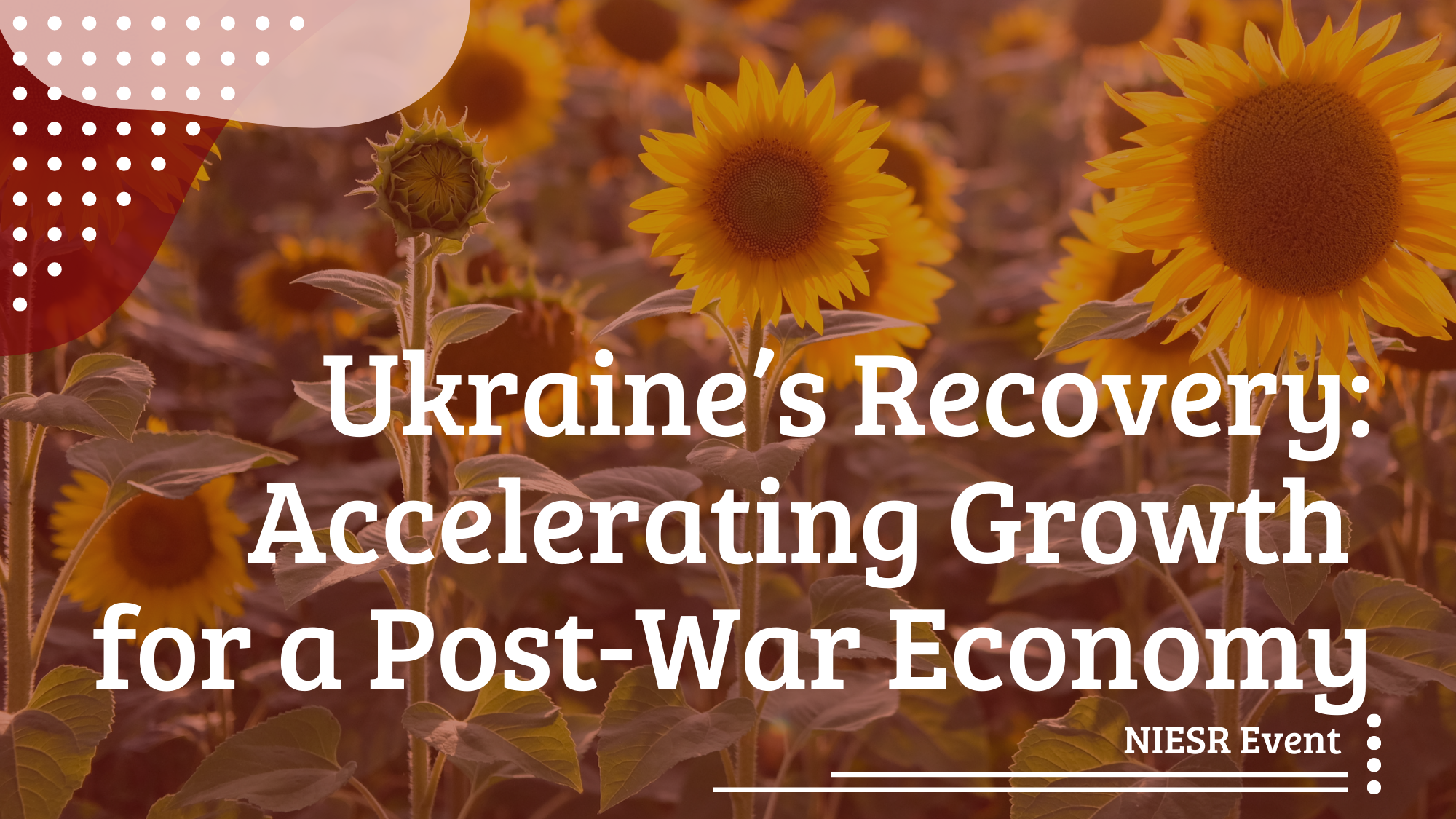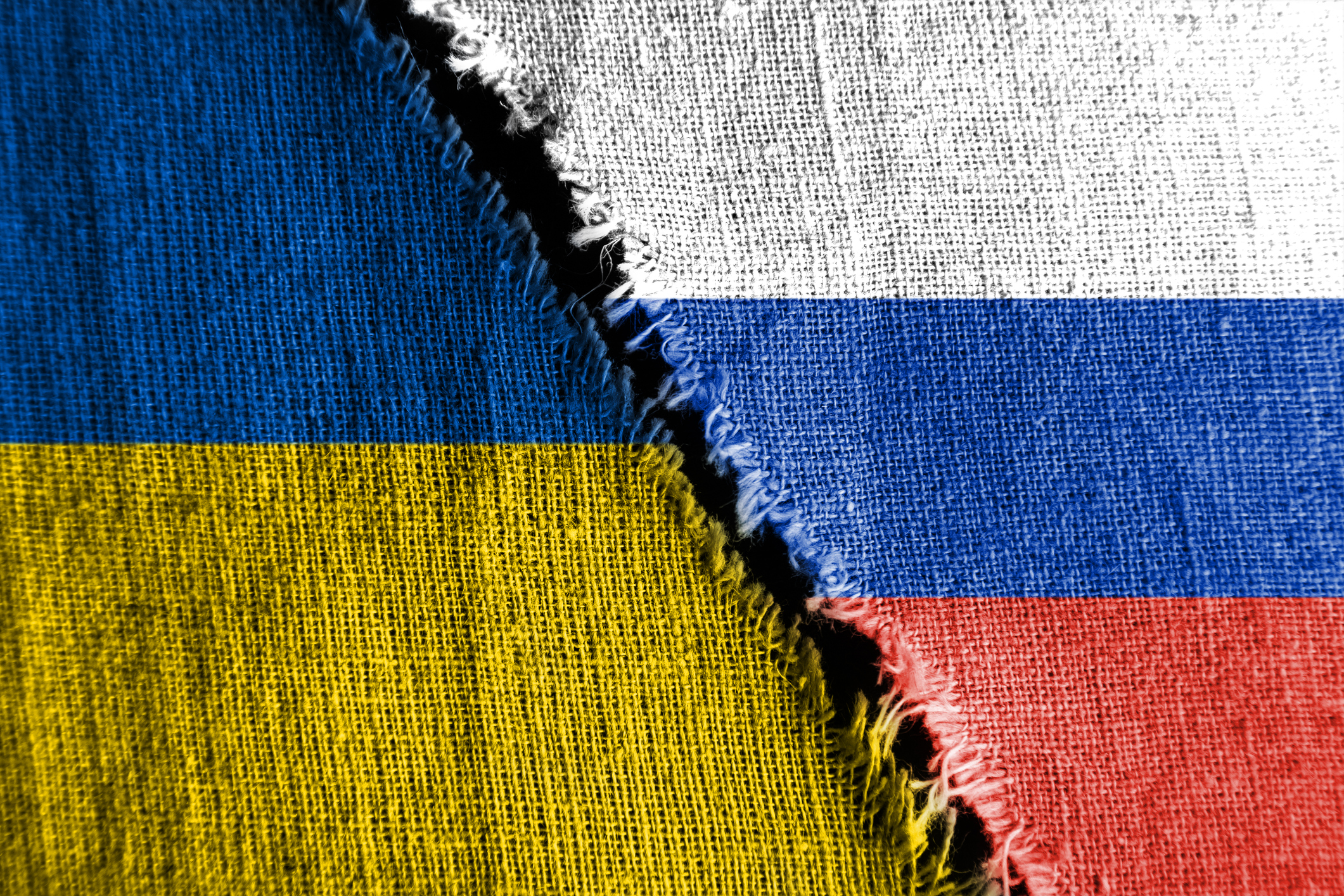One Year On: The Economic Costs and Lessons of the Russo – Ukrainian War
As we mark one-year of the brutal Russian invasion of Ukraine, the economic consequences of the invasion are still affecting countries across the world.
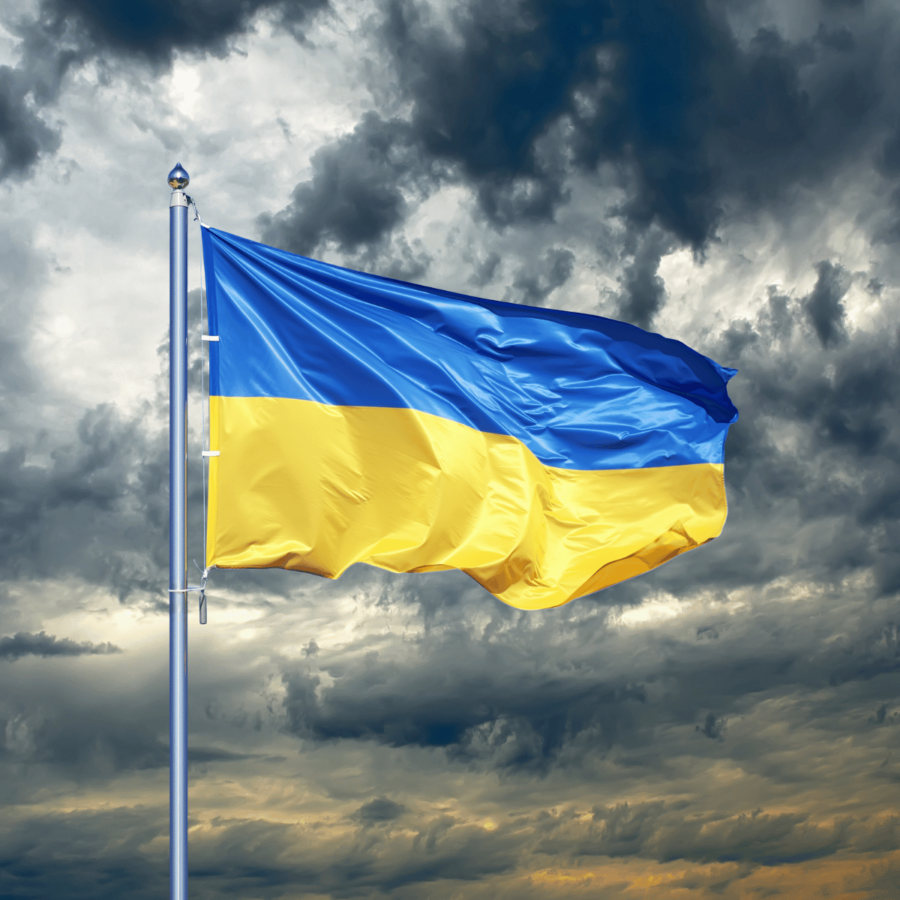
Last year, just after the invasion had started, we published a policy paper that examined its economic impact. One year on, we see that much of what was suggested in the paper materialised. With no signs of a de-escalation happening anytime soon, global uncertainty remains elevated. In today’s Monday interview, Associate Economist, Hailey Low, and Deputy Director for Macroeconomic Modelling and Forecasting, Stephen Millard, discuss the economic consequences of the war and the challenges facing policy makers in Europe.
One year has passed since the invasion started on 24 February 2022, what have been the implications for the world economy and especially the European Economies that have been directly affected by the war?
In short, it was all doom and gloom. As Ukraine and Russia are two major suppliers of energy, food and fertiliser commodities, the conflict has caused disruptions in supply chains and raised prices for these commodities in both developed and developing countries. The rise in prices was particularly devastating as these commodities are necessities. Before the war, Europe, just like the US, was still in the midst of a post-pandemic recovery, experiencing inflationary pressure due to strong demand and weak supply due to problems with global supply chains brought about by the pandemic. The western economies imposed sanctions on Russia with the intention of isolating its economy, which led Russia to cut its gas supplies to Europe, and that drove gas prices sky-high. The sanctions did not cause immediate pain to the Russian economy as expected since Russia’s energy sector was the least affected by sanctions and benefitted from high prices. This led to an increase in Russia’s current account surplus and maintained financial stability. The painful surge in inflation, fuelled in part by the war’s effect on food and energy prices, heralded interest rate hikes, which are still ongoing and have threatened to tip several economies into recession. As for the UK, Brexit meant that the cumulative effect of the war was particularly stark. But as dismal as the war’s impact has been, it could have been worse. Europe had a warmer-than-usual winter which helped lower natural gas prices and stopped there being a severe energy crisis after Russia cut off gas supplies to Europe.
How does this compare with what we were expecting this time last year?
This time last year, we analysed the economic cost of the conflict using our Global Econometric Model, NiGEM. As the invasion had just happened, the assumptions imposed in that paper were in line with how we envisioned the war to play out. We estimated that the conflict would have both direct and indirect effects on world growth: specifically that it would reduce the global level of GDP by 1 per cent and slow UK GDP growth to just 4 per cent. Given that Russia is one of the world’s largest oil producers and energy exporters, we also expected significantly higher energy prices to feed into inflation, adding 3 percentage points to global inflation and raising our inflation forecasts for major economies to 7.1 per cent for the US, 7 per cent for the UK and 5.5 per cent for the Euro Area. We expected a whole slew of sanctions to be imposed on Russia’s energy exports causing oil prices to exceed $140 per barrel, similar to 2008. Agricultural commodities were also expected to take a hit, given that Russia and Ukraine account for a quarter of global wheat and grains exports and 80 per cent of sunflower oil exports.
Fast forward one year and the economic consequences escalated beyond our expectations. GDP growth around the world has definitely taken a hit. According to data from the World Bank, the global GDP growth for 2022 was around 2.9 per cent. As for the UK, it performed similar to expectations: growth was 4 per cent. However growth for the European Economies as a whole was slightly lower at 3.5 per cent. The average inflation rate in 2022 was higher than what we expected, at 8.4 per cent for the Euro Area and 9.1 per cent for the UK. As compared with other economic regions, the euro area has been particularly vulnerable to the conflict as it depends very strongly on energy imports. The prices for commodities like wheat and grains rose sky-high, about 50 – 60 per cent in the early stages of the war, as we had envisioned, and we encountered a severe supply issue that threatened to tip the world, especially emerging economies, into a food crisis. Fortunately, we then saw bumper harvests from various countries and the Black Sea Grain Initiative, which were critical in ensuring this did not happen. But we need to remember that, as unfortunate as these economic indicators are, this is a human catastrophe, which has triggered a huge humanitarian crisis. The UNHCR has recorded that about 8 million Ukrainian refugees, roughly 20 per cent of the population are displaced across Europe currently. This large scale migration which might become worse as the war is intensifying, will present substantial challenges, mainly for western Europe, in terms of finding homes and providing jobs for the refugees, public finances, and possible social tensions.
What do you think will be the key challenge(s) for economic policy going forward in 2023?
While it is expected that Europe’s economic growth will be slow in 2023, our recent Global Economic Outlook suggests that the European Economies are showing more resilience than we might have expected given the war is ongoing. European natural gas prices have fallen to an 18-month low, the lowest since before the war, and this has resulted in the expectation that EU countries and the UK could entirely avoid an economic contraction. But, as it will take time for the fall in wholesale gas prices to trickle through to consumer bills, governments will still need to ensure that the soaring energy prices do not push more people, especially low-income households into energy poverty.
Although headline inflation seemingly has peaked, core inflation remains high and sticky, which requires a continued contractionary monetary policy stance. I would suggest that we need to see a sustained fall in inflation before central banks start to reduce interest rates. Thus, against the backdrop of muted economic growth and high-interest rates, the key challenge for policymakers will be to navigate the fine line between recession and persistent above-target inflation


